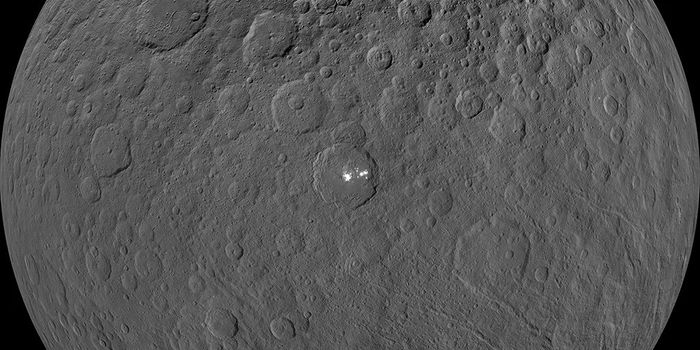The Potential Range of Mass of Dark Matter Narrows Dramatically
The part of the universe that we can see, which includes our planet and stars, makes up only around a quarter (25 percent) of the mass in the universe. The other 75 percent of the universe's mass is thought to be composed of dark matter, which we don't know how to measure or detect, but which we think gives galaxies their shapes. Researchers have now calculated the possible span of mass for dark matter, and it's a much tighter range than was previously thought. The findings, which will be reported in Physics Letters B, dramatically shorten the range of mass that dark matter particles might have. It might help scientists find dark matter in the future.
In this work, the researchers leveraged the knowledge that gravity has an effect on dark matter just like it acts on the visible universe. They used this information to find the upper and lower limits of the mass of dark matter.
The research suggests that dark matter won't be 'ultra-light,' nor wilt be 'super-heavy' as some have speculated unless some force we haven't identified yet is acting on it. This work produced a range for dark matter mass of 10-3 eV to 107 eV. Previous estimates for this range have been much wider.
The scientists assumed that gravity is the only force acting on dark matter, which may or may not be true. That also suggests that if this range turns out to be incorrect, it will show that there is a force or are forces other than gravity that affect dark matter.
"This is the first time that anyone has thought to use what we know about quantum gravity as a way to calculate the mass range for dark matter. We were surprised when we realized no one had done it before, as were the fellow scientists reviewing our paper," noted study author Professor Xavier Calmet of the School of Mathematical and Physical Sciences at the University of Sussex.
"What we've done shows that dark matter cannot be either 'ultra-light' or 'super-heavy' as some theorize - unless there is an as-yet-unknown additional force acting on it. This piece of research helps physicists in two ways: it focuses the search area for dark matter, and it will potentially also help reveal whether or not there is a mysterious unknown additional force in the universe."
"As a Ph.D. student, it's great to be able to work on research as exciting and impactful as this. Our findings are very good news for experimentalists as it will help them to get closer to discovering the true nature of dark matter," added study author and graduate candidate Folkert Kuipers, who works with Professor Calmet at the University of Sussex.
Sources: AAAS/Eurekalert! via University of Sussex, Physics Letters B









